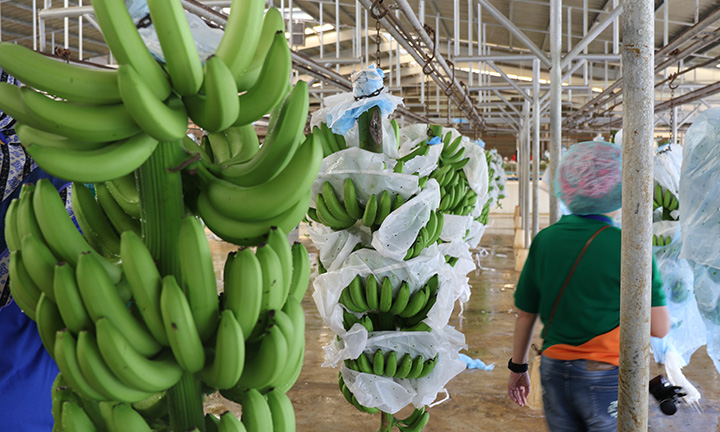SOURCE: Manuel Cayon, Business Mirror
Small banana growers have switched to grains production after the pestering Panama Disease kept spreading in sprawling banana farms of Davao del Norte, the Provincial Agriculture Office (PAGRO) has reported.
This came out in the agency’s recent monitoring of the total hectarage of agricultural crops, especially for rice and corn areas in Davao del Norte.
From 7,000 hectares several years ago, corn production areas in Davao del Norte have now reached more than 10,000 hectares, said PAGRO Senior Agriculturist and Provincial Corn Focal Omar T. Ayco.
Ayco attributed the shifting of crops to the “wide devastation” caused by Fusarium Wilt, or Panama Disease, infestation that has affected banana plantations but which has the dire consequence on small-scale banana farms due to costly management and preventive measures.
He said farmers are now planting their former banana farms with rice or corn, especially with the assistance provided by the PAGRO as part of the “Kawsa sa Agrikultura ug Panginabuhian sa Barangay” or Kaagapay Program.
The provincial government has purchased two units of backhoe to reconstruct banana farms into rice paddies and corn fields, while it provided them with hybrid seeds and fertilizer to restore the productivity of lands left idle and abandoned.
A Yellow Corn Enhancement Program of the PAGRO entitles farmers with free hybrid yellow corn seeds and fertilizers, while the same assistance is also being given to farmers planting white corn “especially now that white corn consumption has increased as alternative to rice consumption,” Ayco said.
Ayco has encouraged farmers to maximize the income opportunities of corn production as market buying prices are relatively high at P16.80 to P18.50 per kilo for yellow corn, and P20.00 to P24.00 per kilo for white corn.
PAGRO Senior Agriculturist Jefferson O. Cerbito, meantime said a similar increasing trend of rice production areas in Davao del Norte was also noted.
Cerbito said the rice farms are now about 19,000 hectarage and still expected to increase.
“These used to be rice lands but they converted to bananas, and then they go back to rice farming due to Fusarium Wilt,” he said.
Of the 19,000 rice areas, 15,000 hectares are irrigated and 4,000 are upland rain-fed rice areas mostly in tribal communities, he said.
The PAGRO and the Department of Agriculture have extended assistance to them with upland rice seeds for distribution to tribal farmers, as well as giving hybrid and in-bred rice seeds and fertilizer.

